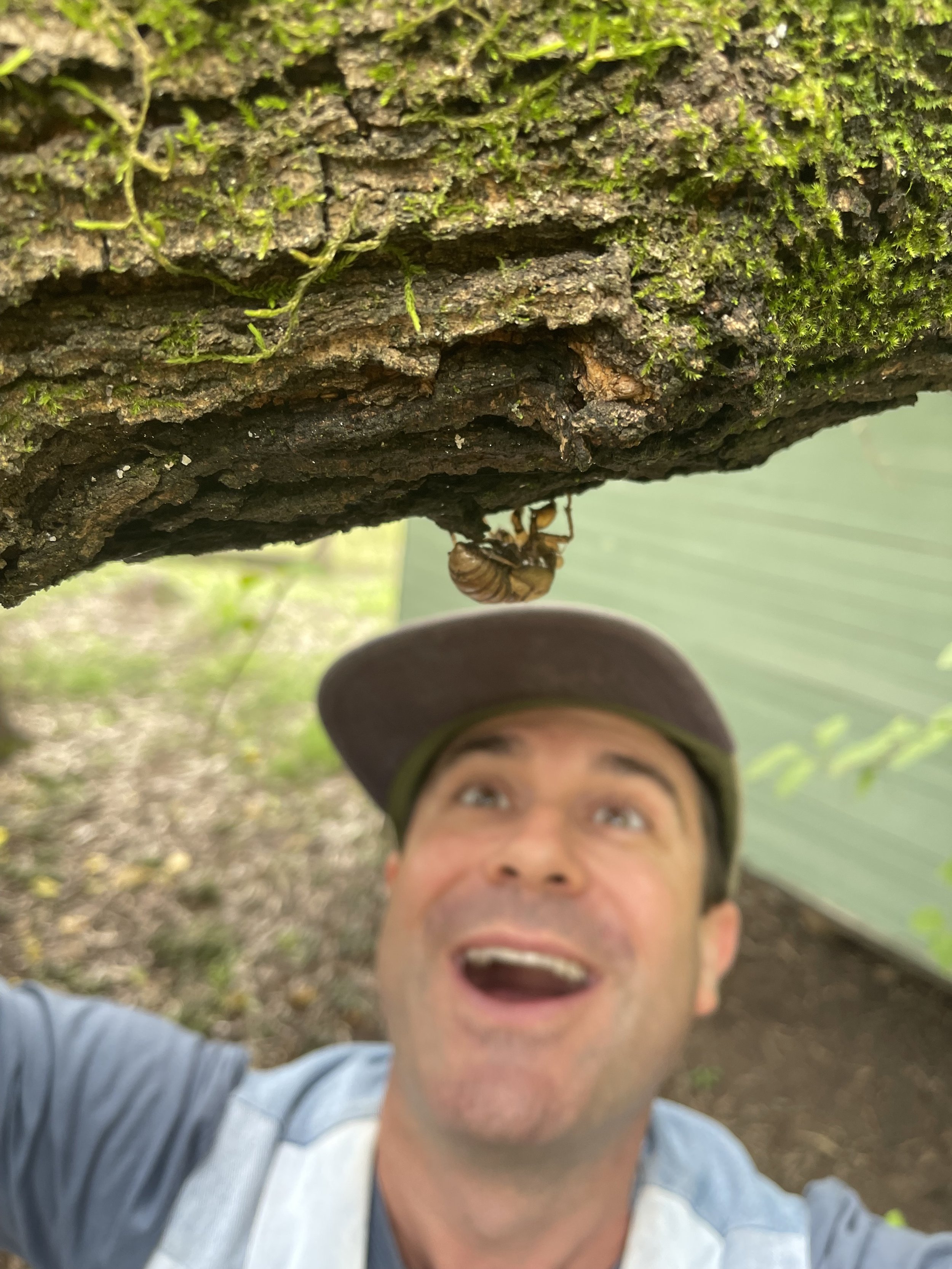World Environment Day!
Here’s a pic I took of Scrapboy discovering a Cicada shell in the yard!
Do you know what day it is today? That’s right…. It’s World Environment Day!
World Environment Day is special day celebrated on June 5th each year, encouraging awareness and action for the protection of the environment.
This year the theme is #GenerationRestoration
‘We cannot turn back time, but we can grow forests, revive water sources, and bring back soils. We are the generation that can make peace with land.’ ~ United Nations
So in the spirit of World Environment Day and this year’s theme of #GenerationRestoration, here are…
3 ways you can help restore your local ecosystem…
Create a Frog Habitat
Did you know that Australia is home to over 240 frog species? Our amphibian friends play a super important role in the food web (both as a predator & prey), not to mention, Frog act as an indicator for our environments health. Due to their Permeable skin (which they drink through!) frogs soak up their surroundings, often resulting in them being the first ones to feel the direct impact of a shift in their ecosystem (whether that is pollution, PH levels, climate change etc)
Unfortunately, around 20% of Australian frogs are currently listed as threatened, and in the last 25 years, 6 have been declared extinct.
So what can we do to help our froggy pals? Well… Creating a frog ecosystem in your yard is an AWESOME start.
Get Funky in the Compost
If you didn’t know already … I’m pretty HUGE fan of compost… & here’s WHY!
Compost is a way WE can give to the planet. When you compost, you’re not just disposing of your food scraps … It’s an act of reciprocity.
Giving back … Feeding the earth!
Costa the Garden Gnome and I call it magic, because it’s how we turn our food trash into treasure!
When you make the decision to compost instead of letting your organics go to landfill, YOU my friend, are an active participant in this circle of nourishment. The earth feeds you & you, in response, feed the earth…. Pretty cool huh?
But the impact of compost expands even further than growing strong, healthy plants…. It’s future building.
Composting reduces greenhouse gases by enhancing carbon sequestration in the soil and decreasing methane emissions through aerobic decomposition (as methane-producing microbes thrive in anaerobic conditions).
So next time you’re peeling carrots or maybe a banana… or maybe about to toss the egg shells from your omelette…. Remember, making a little change every day , is a big change.
Here’s a little vid me & scrapboy made all about composting!
‘Fill me in’ Fruit Sticker Sheets
Have you ever wondered… ‘What should I do with this little sticker?’ when you’re munching away at juicy apple? It can be easy for produce stickers to end up in the compost when we’re disposing of mandarin peels or Mango pips … but its actually pretty important that we don’t, as these produce stickers are made of PLASTIC! And plastic doesn’t belong in the soil.
So, to help, I decided to make these little sticker sheets to put on your fridge and fill up with fruit stickers as a daily reminder and fun activity.
Just remember, that once the picture is filled, it has to be disposed of in the landfill bin (or… you could frame it and send me a pic!)
Happy Sticking!
Grow a Pollinator Garden
Pollination is everyone’s business. Almost 90% of wild plants and 75% of the world’s leading crops depend on animal pollination. That’s right, one out of every three bites of food you eat is thanks to pollinators like bees. So what can we do to help our pollinator pals?
REWILD.
Creating habit, pollinator corridors full of pollen filled plants is one of the BEST ways we can create an oasis for our bee (& other pollinator!) friends.
Here’s a little Vid of Costa the garden gnome chatting with Cedar from FLOW HIVE about the importance of creating pollinator spaces.
You can help care for our bees by planting more of the flowering plants that bees love…find your free bee-friendly garden plants guide below. Your family can also help our buzzy insects by not using chemicals pesticides on the garden (because sprays can harm bees and other helpful insects).
You can also help by buying local honey at your local farmers’ markets! Yum, yum!
Maybe you already have some of these at your place! Which flowers are you going to plant for your local bees?
See ya later Green Thumbs! Happy World Environment day







